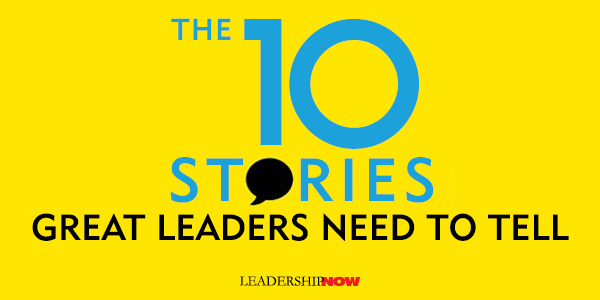 |
 |
09.13.19

The 10 Stories Great Leaders Need to Tell
WE KNOW GREAT STORIES are the foundation of great communication. It’s not the idea but the story about the idea that begets followers. The question is, are you telling the right story? A leading expert in organizational storytelling, Paul Smith advises us that more important than how we tell a story is what story we are telling. And by story, he means “a narrative about something that happened to someone.” As such, it will include a time, a place, and a main character. That main character will have a goal, and there will probably be an obstacle getting in the way of that goal—a villain, if you will. And there will be events that transpire along the way that hopefully resolve themselves in the end. On the pages of The 10 Stories Great Leaders Tell—a book designed to be read in about an hour—Paul Smith reveals the ten most important stories a leader needs to tell and how to begin to craft our own unique story. Each story has a specific objective. These stories tell us why. The first four stories are about setting the direction for the organization: Story 1: Where We Came From (A Founding Story)
Story 2: Why We Can’t Stay Here (A Case-for-Change Story)
Story 3: Where We’re Going (A Vision Story)
Story 4: How We’re Going to Get There (A Strategy Story)
The next four stories are about who we are as an organization: Story 5: What We Believe (A Corporate-Values Story)
Story 6: Who We Serve (A Customer Story)
Story 7: What We Do for Our Customers (A Sales Story)
Story 8: How We’re Different from Our Competitors (A Marketing Story)
The last two are about you as a leader: Story 9: Why I Lead the Way I Do (A Leadership-Philosophy Story)
Story 10: Why You Should Want to Work Here (A Recruiting Story)
Smith has also produced a workbook to accompany this book to help you begin to tell the stories you need to be telling. Good examples accompany each of the ten stories. In conclusion, Smith offers an outline in the form of eight questions to help you to organize and structure the ideas and stories you have collected. Equipped with stories like these, you will become a more effective leader. 
Posted by Michael McKinney at 12:44 AM
|
BUILD YOUR KNOWLEDGE
 

How to Do Your Start-Up Right STRAIGHT TALK FOR START-UPS 
Grow Your Leadership Skills NEW AND UPCOMING LEADERSHIP BOOKS 
Leadership Minute BITE-SIZE CONCEPTS YOU CAN CHEW ON 
Classic Leadership Books BOOKS TO READ BEFORE YOU LEAD |